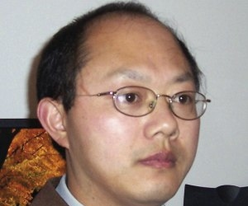A Clustering Approach to Free Form Surface Reconstruction from Multi-view Range Images
Authors: Hong Zhou a, Yonghuai Liu a,*, Longzhuang Li b, Baogang Wei c
Authors; Hong Zhou a, Yonghuai Liu a,*, Longzhuang Li b, Baogang Wei c
DOI:10.1016/j.imavis.2008.07.009
Abstract:
3D modelling finds a wide range of applications in robot vision and reverse engineering. However due to the presence of surface scanning noise, accumulative registration errors, and improper data fusion, the reconstructed surfaces from multiple registered range images are often non-smooth and distorted with thick patches, false connections and blurred features. These shortcomings will limit the wide applications of 3D modelling using the latest laser scanning systems. In this paper, the clustering approach, surface segmentation and classification are employed to fuse registered range images to reduce the adverse effect of large accumulative registration errors and heavy scanning noise, minimize the dissimilarity of the fused surface with respect to the original overlapping surfaces, and produce smooth and detailed 3D object computer models. For initialization of the clustering approach, an automatic method is developed, shifting possible corresponding points from different viewpoints toward each other and thus, making sure that the initialization of the cluster centroids are in between the two data sets so that more efficient and effective integration of data can be obtained. Then the principal component analysis (PCA) is employed to segment these centroids into different areas for the representation of the initially fused surface and then the tensor analysis is applied to classify these areas into featured and non-featured ones. In the integration process, the K means and fuzzy c means clustering approaches from the pattern recognition and machine learning literatures are employed to integrate non-featured areas for a smooth fused surface and featured areas for keeping the geometric details. By controlling a parameter, the final integrated surface can be traded off between smoothness and geometric details. Finally the fused point set is triangulated using an improved Delaunay method, guaranteeing a watertight surface. The new method is theoretically guaranteed to converge and minimize the dissimilarity between the final fused surface and original surfaces. A comparative study based on real images shows that the proposed algorithm desirably retains geometric details, produces smooth surface and minimizes the integration error.
